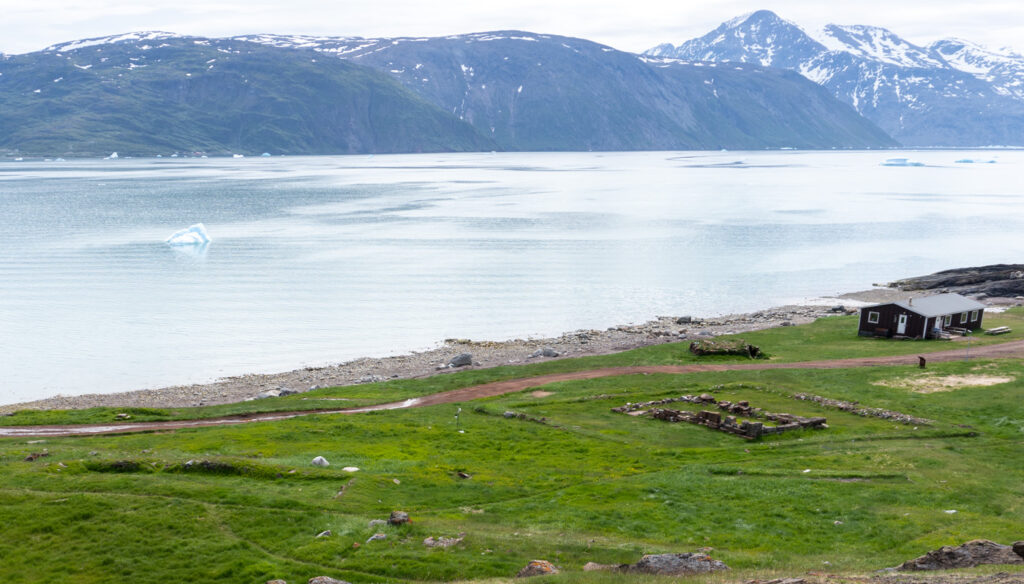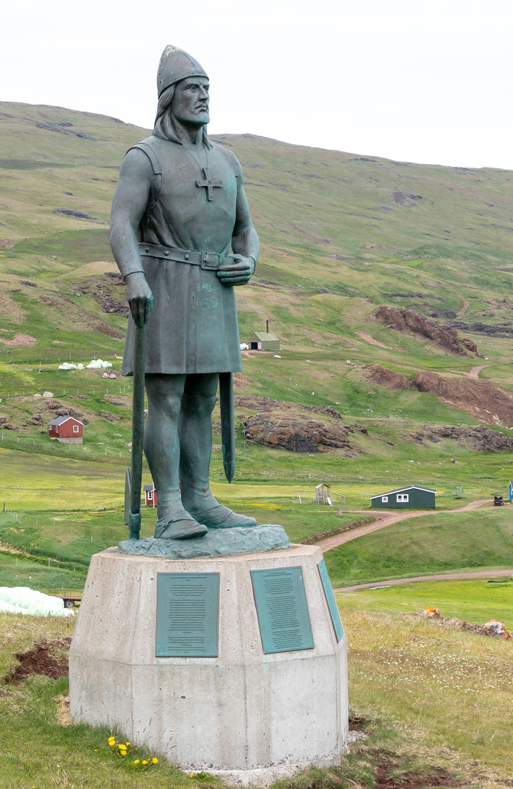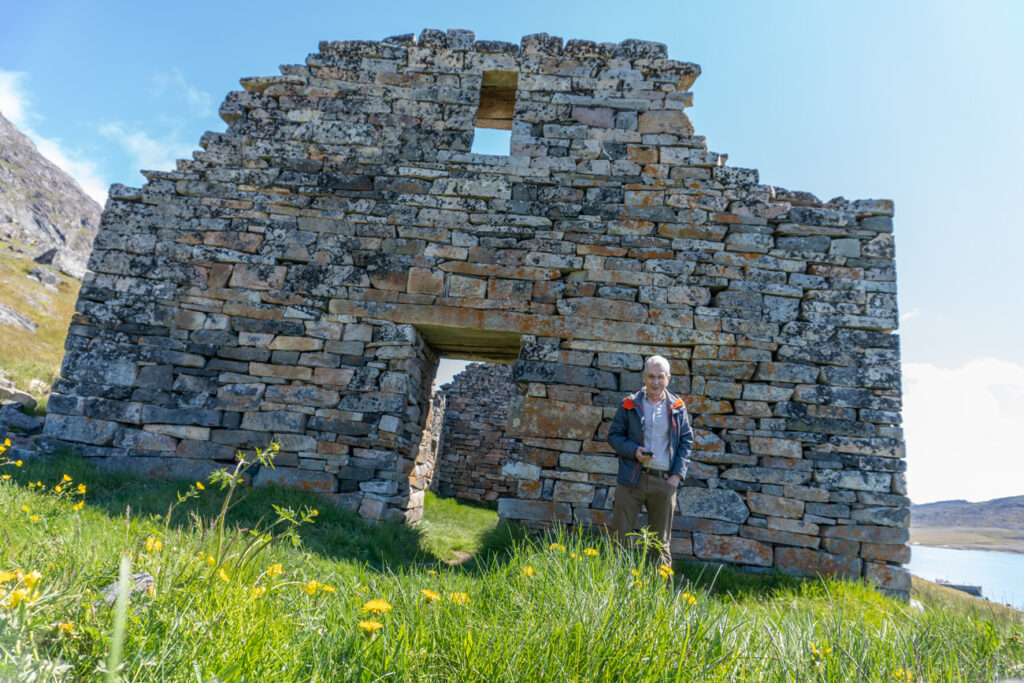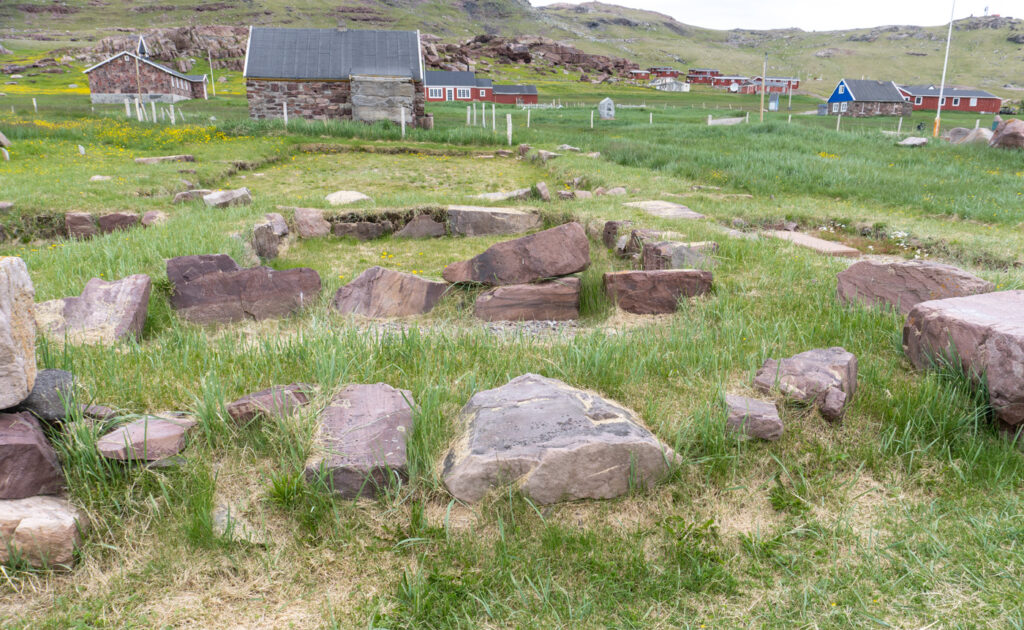
I’m now in South Greenland, visiting Norse Ruins. I made it out to Eric the Red’s Farm!
 For me, part of the allure of the Greenland Norse Ruins is the idea of the “lost colony”. Eric the Red arrived in 985 and the Norse prospered in Greenland for four centuries, establishing over 200 hundred farms, 7 churches, even a tiny cathedral. Then decline set in and contact slowly faded out. When Denmark tried to re-establish contact in the 1700s, they found only abandoned ruins. What happened? Where did they go? There are plenty of theories, but no-one really knows.
For me, part of the allure of the Greenland Norse Ruins is the idea of the “lost colony”. Eric the Red arrived in 985 and the Norse prospered in Greenland for four centuries, establishing over 200 hundred farms, 7 churches, even a tiny cathedral. Then decline set in and contact slowly faded out. When Denmark tried to re-establish contact in the 1700s, they found only abandoned ruins. What happened? Where did they go? There are plenty of theories, but no-one really knows.
Today I was at the village of Qassiarsuk visiting Eric the Red’s farm of Brattahlíð. It’s a nice piece of green farmland, probably the best in all Greenland. This is where Leif Erikson grew up and there is now an idealized statue of Leif on a hill, staring South-West towards Vinland. The farm site has scattered ruins from the 10th c and also the foundations of a later Norse church.
A discreet distance away is the site of the first tiny church in Greenland, Thjodhild’s church, which (according to the Sagas) Eric very reluctantly allowed his wife Thjodhild to build, on the condition that he didn’t have to see the stoopid thing from his farm, gods damnit!
Earlier this week I took a boat out to the Hvalsey Church. This is from around 1300 and is by far the best preserved Norse ruin in Greenland. It’s small, but strongly built. I was the only visitor. I also made a visit to the scattered ruins of the little 12 c. Garðar Cathedral, at Igaliku. Yes, there was an actual Catholic Bishopric here in Norse times!
 Hvalsey Church |
 Garðar Cathedral |
Footnote: Some historians argue that Eric’s farm might have been at a slightly different location further down Eric’s Fjord. Naturally the citizens of Qassiarsuk indignantly reject this ridiculous idea. After all, they have an actual statue of Leif Erikson! Fortunately for them, the scholarly consensus, supported by recent archaeological work, still strongly favors Qassiarsuk.